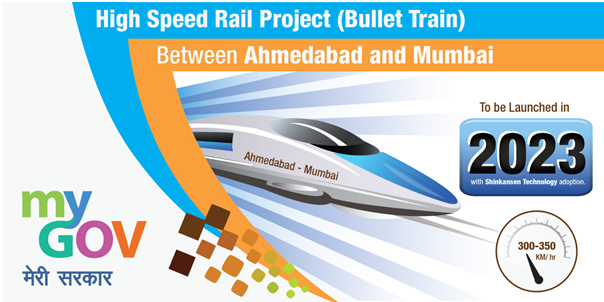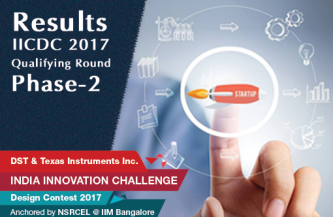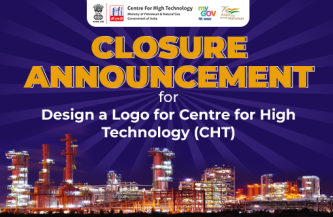The Case for Bullet Trains
“It’ll cost far less to act now than it would to delay until further damage is done” is how President Ronald Reagan introduced his ambitious Highways and Bridge Repair program to the American audience during a radio address delivered on 27th November 1982. The American economy witnessed spectacular growth for a sustained period in the years following the launch of this program and the highways program is credited as one of the major contributors in that growth story.
As India and Japan signed an MoU for High Speed Rail Project, more popularly referred to as Bullet Train project, during the recent Indian visit of Prime Minister Shinzo Abe of Japan, a debate has ensued on the various dimensions of the project. Before venturing to address some of these issues, a bit of history is in order. The High Speed Rail Corporation of India Limited was set up in July 2012 as a subsidiary of the Rail Vikas Nigam Limited with the express purpose of developing and implementing high speed rail projects in India. Earlier, in February of the same year, an expert Group on Modernization of Indian Railways, had submitted a report which among other things had recommended construction of a High Speed railway line between Mumbai and Ahmedabad and for undertaking feasibility studies on six other different alignments. The Union Minister of Railways, Suresh Prabhu, while delivering his 2015-16 railway budget in Parliament, announced “we will continue to pursue with vigour our special projects like High Speed Rail between Mumbai-Ahmadabad. The feasibility study for this is in advanced stage and report is expected by the mid of this year. Quick and appropriate action will be taken once the report is available with us. Regarding the other high speed routes on the diamond quadrilateral, studies are being commissioned.” The feasibility study of the Mumbai-Ahmedabad corridor was submitted in July 2015 and the process culminated with the signing of the MoU between India and Japan on 12th December 2015. With this perspective – that years of detailed thought and planning went into the announcement of the first bullet train project in India – some of the issues raised can be addressed.
First, questions have been raised on the very need for bullet trains. The Indian Railways, with a network of over 65,806 route km of railway lines is the backbone of the nation’s transportation system for passenger and freight traffic. The system is highly stretched on main trunk routes, which carry bulk of the passenger and freight traffic. The capacity utilisation on certain routes is as high as 150%. The overcrowding of the system has led to a slowing down of average speeds for passenger and freight trains and there is a clear shift of traffic from railways, which is a more energy efficient and environmental friendly transport mode compared to road transport. The increasing congestion on the railway trunk routes has also resulted in higher turnaround time for movement of goods, affecting manufacturing in the country. In fact, Indian industry has been highlighting logistic constraints, especially in the rail movement, as one of the major reasons contributing to high cost of manufacturing in the country and erosion of competitiveness.
A network of High Speed Rail (HSR) system in the longer run would facilitate travelling with enhanced passenger comfort, safety and environmental benefits. High Speed Rail System would also release capacity of existing rail lines with which the HSR would compete, enabling faster movement of freight and passenger traffic on the existing lines. The HSR system also releases capacity of airports as short haul flights get curtailed. This capacity in turn could be utilised for longer duration flights that improve economics of air transport also.
Second, as per official sources, the average per km cost of construction of the Bullet Train between the Mumbai-Ahmedabad route works out to approximately Rs. 140 crore. In contrast, the metro at Vijaywada is costing approximately Rs 288 crore per kmi . The Japan International Cooperation Agency (JICA), formerly known as Japan Bank of International Cooperation (JBIC), funded about 60% of Delhi Metro phase-I in six tranches, starting with the first round in 1997. The loan was sanctioned at an annual interest rate of 1.2%, and a repayment period of 30 years, with a moratorium period of 10 years. Contrast this with the present deal, where the repayment period is 50 years with an initial moratorium of 15 years and an interest rate of mere 0.1%. The starting annual ridership on this route is expected to be 13 million in 2023, which is projected to go up to 68 million by 2053. So if revenue streams and inflation are factored in, the loan comes at virtually no cost and the project essentially self finances.

Third, the standard Indian debate about prioritizing between spends on big ticket infrastructure projects and social sector has found a false resonance here as well. The Japanese Government, JICA and the Ministry of Railways worked closely over the last two years and prepared a feasibility report. Japan then offered an assistance package with a loan on very concessional terms. This loan is exclusively meant for the high speed railways project, which means this money is not available for other projects including upgradation of the existing railway infrastructure. So the moral dilemma of opportunity cost is actually a false choice. In addition, what this arrangement does is that it frees up India’s internal resources for deployment into other priority sectors while a big ticket infrastructure project, with many spin-off benefits, gets built with minimal internal investments.
Fourth, Transfer of Technology (ToT) and ‘Make in India’ will be an essential part of the assistance package. Make in India of HSR systems will include manufacture of rolling stock , equipment and machinery, to be promoted in a phased manner. There will also be ToT of the construction technology. A big manpower development programme on HSR will also be a key element of the cooperation with Japan. A HSR training institute and a training programme of an approximately 4000 officials for HSR operations is also part of the HSR cooperation programme. The Japanese Government has indicated that for civil construction contracts, the prime contractor can be an Indian company, a Japanese company or a Japanese company led JV with an Indian company. This is a major departure from the prevalent STEP loan conditions of JICA where prime contractors can only be Japanese companies or Japanese led JVs.
Fifth, a European consortium of SYSTRA (France) and ITALFERR (Italy) assisted by RITES had studied the feasibility of a broad gauge HSR between Pune-Mumbai-Ahmedabad with speed up to 350 kmph and prepared the cost estimates in the year 2010. The French Public Sector Company SNCF prepared a business development plan for this corridor based on the 2010 study. No financial assistance was offered by SNCF for the project. No other entity has approached the Ministry of Railways with alternative offers either. It is reasonable to presume that while the other players are also capable of executing the project, they are not ready to match the Japanese offer in the realm of financial assistance to the Railways.
Sixth, technology transfer in improving safety of Indian railways is one of the biggest area of co-operation. Japanese Shinkansen technology is acknowledged as one of the most efficient and safe high speed rail technologies with no casualties in 50 years of its operation. Acceptance of Japanese offer, therefore, does not compromise the quality of the project in any manner. On time performance of Japanese Railways is the best in the world. The average delay time per trip is within one minute. The Japanese system is disaster resistant with earthquake detection system kicking-in, in the event of an earthquake, which halts the train immediately.
In addition, Information sharing for environment friendly sanitation technology in trains & know how on mitigation of natural disasters are also important areas of co-operation. Besides the HSR Memorandum of cooperation, two more MoUs were signed with Japan during the visit of Prime Minister Abe. These MoUs were decided during the visit of the Railway Minister to Japan in September 2015. One MoU is on comprehensive technology cooperation in railways with Japan and the other is between Railway Research institutions of the two countries viz RDSO of India and RTRI of Japan.
While these are the tangible benefits of the project, what about the intangible benefits? I am reminded of an experience that I had in my professional career while working in a heavy earth moving equipment manufacturing company. This was in Odisha in the year 2006. The Indian economy was then on the upswing and the investments in highways and other infrastructure projects had given immense entrepreneurial and other economic opportunities to people who had hitherto not been integrated in the economic mainstream. One such customer of the company I worked with, and who had been reasonably successful after deploying equipments he had purchased, invited us for an event he was organising in his village. In this village, in a remote corner in Odisha, this person was organizing a cricket tournament, after which he would select the best performers and then sponsor them for operator training for earth moving equipments. Struck by his unique initiative, I asked him why did he not directly sponsor the youth, instead of selecting through a cricket tournament? His answer perhaps best exemplifies the chain of aspirations that economic empowerment triggers. Organizing a cricket tournament was this person’s way of communicating to his community that they too could rise up in the social chain and not just work for subsistence, and at the same time the element of competition was introduced so that the youth of his village valued the sponsorship they were about to get.
The bullet train project, in conjunction with other similar infrastructure projects in the timeline, has the potential to once again kick-start this economic aspirational chain at multiple levels. The confidence booster and its trickle-down to other areas plus the usual development of many ancillary activities around the construction of the high speed line and the manufacture of the coaches in India are likely to be substantial. If a trophy project can be executed within time and cost estimates, then it will give our nation the confidence and self-belief about executing other projects.
Akhilesh Mishra is Director (Content), MyGov
________________________
ihttp://www.thehindu.com/news/national/telangana/vijayawada-metro-rail-to-cost-rs-288-crore-per-km/article7001642.ece
Note: The blog has been updated with latest figures.





